- Home
- Deborah Harkness
The World of All Souls Page 29
The World of All Souls Read online
Page 29
Baynard House, 135 Queen Victoria Street, London EC4V 4AA
See also: DECORATIV ARTS: Mary Sidney’s Laboratory
Christ Church Greyfriars
“We gather once a month in Father Hubbard’s crypt. He lives in what’s left of the Greyfriars Priory, just over there.”
Andrew Hubbard’s modern-day London house is located not far from St. Paul’s Cathedral in what was once the Greyfriars monastery church. Henry VIII first dissolved the medieval monastery. Its accompanying church was renamed Christ Church and was later destroyed in the Great Fire. Christopher Wren’s smaller replacement was subsequently hit by bombs in World War II. A peaceful rose garden has been planted in the ruins of the main body of the church, from where you can view the tower that remains. This tower has been converted into a private residence, and was the inspiration for Hubbard’s house.
The three ghosts at Greyfriars whom Diana and Linda Crosby discussed in The Book of Life refer to three women buried there. Queen Isabella, the “She-Wolf of France,” was wife to Edward II. Historians dispute whether she and her lover merely deposed, or also murdered, the king. On her death in 1358, she was buried in Greyfriars, dressed in her wedding mantle. Centuries later the reputedly beautiful Agnes Hungerford, found guilty of murdering her husband and hanged at Tyburn in 1523, was buried, too, at Greyfriars. Stories from the nineteenth century report sightings of these two ghostly women in the church grounds, fighting furiously. The third ghost Diana saw, the hysterical Elizabeth Barton, was the “Mad Maid of Kent,” who was also buried at Greyfriars in the sixteenth century. Often succumbing to fits and visions, Elizabeth landed herself in trouble when she prophesied against Henry VIII’s marriage to Anne Boleyn, and she was executed at Tyburn in 1534. Her later prophecy that Diana would have twins proved accurate.
Christ Church Greyfriars, King Edward Street, London EC1
The Inns of Court
“I heard he was at the Middle Temple Hall with Christopher Marlowe last night. Watching a play, by all accounts.”
Matthew Roydon and Kit Marlowe used to gamble and drown their sorrows at the Inns of Court. Dating back to the medieval period, these four Inns—Grey’s Inn, Inner Temple, Lincoln’s Inn, and Middle Temple—then and now were training grounds for lawyers and also served as gentlemanly finishing schools for the elite. Middle Temple Hall is one of the few buildings from Matthew Roydon’s time to have survived the ravages of fire and world war. The nearby Temple Church, now belonging to Inner and Middle Temple Halls, also still stands, although it is heavily restored. Built by the Knights Templar in the late twelfth century, it operated as part of their English treasury and headquarters, and many of the order’s secret initiation ceremonies took place there.
Middle Temple Hall, Middle Temple Lane, London EC4Y 9AT
Temple Church, Temple, London EC4Y 7BB
See also: ORGANIZATIONS: The Knights Templar
The Parish of St. James Garlickhythe
The area surrounding St. James’s Church was far more prosperous than Blackfriars, with spacious well-kept streets, large houses, busy shops, and a tidy churchyard.
The parish of St. James Garlickhythe, where Susanna Norman, Goody Alsop, and the rest of the Garlickhythe gathering lived, was a prosperous area in the Elizabethan city of London. The old medieval church of St. James, like most in this area, was destroyed in the Great Fire, but the replacement rebuilt by Wren still stands. The name Garlickhythe was taken from the nearby landing spot on the Thames where ships carrying garlic bulbs from France had docked and traded since the Middle Ages. The French ships also carried wine, and the parish has had a long association with it, placed within the Vintry ward (of which Goody Alsop was an elder), one of the twenty-five wards of the City of London. It also has some of the oldest parish records in the country, going back to 1535. Hugh Plat, who tipped off George Chapman about a mysterious manuscript in John Dee’s possession, lived in the area, and Susanna Norman is recorded as the parish midwife.
St. James Garlickhythe, Garlick Hill, London EC4V 2AF
The Royal Exchange
“The Royal Exchange.” I turned to him in excitement. “At night! You remembered.” . . .
We entered through the wide arches next to the bell tower topped with a golden grasshopper. Inside, I turned around slowly to get the full experience of the four-storied building with its hundred shops selling everything from suits of armor to shoehorns. Statues of English monarchs looked down on the customers and merchants, and a further plague of grasshoppers ornamented the peak of each dormer window.
Diana got her wish and was able to see the original Tudor Royal Exchange at night, atmospherically lit with lanterns, and dancers enjoying the music put on by merchants for the customers. The Royal Exchange was founded by the influential and wealthy merchant Sir Thomas Gresham in the 1560s. It was officially opened in 1571 by Elizabeth I, to be used as a center of commerce and trade, the first of its kind in the city. The ornamental grasshoppers Diana noticed on the building were from the Gresham family crest, and the weather vane of the Royal Exchange today (which is the third incarnation, the previous two buildings having been destroyed by fire) is still a golden grasshopper, in honor of its founder.
The Royal Exchange, London EC3
The Barbican
The closer we got to the apothecary’s place of business, the colder the air felt. Just as at St. Paul’s, there was another surge of power, but an oppressive atmosphere of poverty and desperation hung over the neighborhood. An ancient tower crumbled on the northern side of the street, and the houses around it looked as though a gust of wind might carry them away. Two youths shuffled closer, eyeing us with interest, until a low hiss from Pierre stopped them in their tracks.
Diana visited John Chandler, the apothecary living to the north of the City walls, in an area known then and now as the Barbican in honor of the Roman gateway that once stood there. It was the site of a Jewish community in the twelfth century, including their burial ground, as Matthew explained to Diana. By the Elizabethan era, it was an insalubrious neighborhood, home to thieves, prostitutes, and outcasts. But writers and actors also lived there, perhaps drawn by the relatively low rent. Today the Barbican is a modern residential and arts complex, with echoes of its past in street names such as Jewin Street, as well as ruins of the City’s ancient Roman walls still visible alongside the medieval church of St. Giles Cripplegate. If you want an even better sense of London’s history the Museum of London is also nearby.
St. Giles Cripplegate Church, Fore Street, Barbican, London EC2Y 8DA
Museum of London, 150 London Wall, London EC2Y 5HN
Bedlam
Bedlam was an oubliette in all but name—a place for forgetting, where the insane were locked up with those interred by their own families on some trumped-up charge simply to be rid of them. With nothing but straw for bedding, no regular supply of food, not a shred of kindness from the jailers, and no treatment of any sort, most inmates never escaped. If they did, they rarely recovered from the experience.
Bedlam, or Bethlem, was founded in 1247 as a hospital for the poor by the Order of St. Mary of Bethlehem. By the fifteenth century, it had gradually come to house the insane. Still functioning as such more than six hundred years later, it is Europe’s oldest surviving psychiatric hospital. When Diana visited in 1591, she was admitted by the master in charge of the institution at the time, Master Sleford, and the hospital was still on its original site, located just outside the City walls near Bishopsgate. Diana saw for herself the appalling conditions of the place, so notorious that the name Bedlam entered the English language as a word meaning uproar and confusion. By the 1660s the buildings were so decayed that they were demolished, and a new hospital was built in 1675–76 just north of London Wall in Moorfields. It has continued to move farther out of the city over the centuries, and Bethlem Royal Hospital is now in the suburbs of southeast London. Recent archaeolo
gical work carried out at Liverpool Street station has uncovered a sixteenth-century mass grave, thought to contain the remains of former Bedlam inmates, giving still more evidence of the place’s dark history. It is an institution that has had a particular impact on the lives of daemons in London and England.
See also: CREATURES: Daemons
The Thames & the Frost Fairs
Matthew shared his memories of the city during the course of the afternoon as the tide rose and fell. He told me about the time in the fifteenth century when the Thames froze for more than three months—so long that temporary shops were built on the ice to cater to the foot traffic.
Though the river Thames in London is a tidal estuary, it does sometimes freeze over. During the early modern period, Europe experienced widespread climate change. Known at times as the Little Ice Age, this drop in temperatures led to a decrease in arable land and poor harvests. But challenges like these could sometimes provide opportunity. When the river froze, it drove London’s busy watermen out of business as they could not ply their oars—or their trade—shuttling passengers from the playhouses of Southwark to the City. Instead people walked across the ice. And in a city that was full of trade regulations, this new expanse of frozen river enabled the establishment of a free-market zone of shops, dramatic entertainments, temporary pubs and eating establishments—you name it. These moments of hard freeze were called Frost Fairs, and sometimes artists preserved them on canvas, as in the freeze of 1683–84 (pictured below). The incident Matthew referred to was in 1410, when the Thames froze for fourteen weeks.
Greenwich Palace
The fourth-floor tower room in Greenwich Palace afforded a sweeping view of the gray river, muddy ground, and England’s stormy skies. In spite of the many windows, the silvery morning light did little to dispel the heaviness of the room, which was resolutely masculine and early Tudor in its furnishings. The carved initials on the ceiling—an intertwined H and A for Henry VIII and Anne Boleyn—indicated that the room had been decorated around the time of Elizabeth’s birth and seldom used since.
The grand Tudor Greenwich Palace, or the Palace of Placentia as it was called, became one of the principal royal residences when Henry VII took power, replacing a medieval royal manor. In Henry VIII’s reign, Greenwich was a particular favorite, witnessing many of the highs and lows of his rule: lavish banquets and Christmas celebrations, including one of the first masquerades in the kingdom and knightly tournaments in the tiltyard. Henry VIII was injured and almost died during one of the jousts. In the same tiltyard, Diana had her near-fatal encounter with Louisa de Clermont and Kit Marlowe. Henry’s daughter Elizabeth was born at Greenwich. Later it was where her mother, Anne Boleyn, was arrested for adultery and from where she was taken by barge downriver to the Tower of London. The palace was demolished in the seventeenth century, and there is a marker on the site, where the Greenwich Old Royal Naval College now stands.
Old Royal Naval College, King William Walk, Greenwich SE10 9NN
John Dee’s Library, Mortlake
Dee owned more books than any of the Oxford or Cambridge colleges, and he required a working library—not one for show. Not surprisingly, the most precious commodity was not light or seating but shelf space. To maximize what was available, Dee’s bookshelves were freestanding and set perpendicular to the walls. The simple oak bookshelves were double-faced, with the shelves set at varied heights to hold the different sizes of Elizabethan books. Two sloped reading surfaces topped the shelves, making it possible to study a text and then accurately return it.
John Dee’s house in Mortlake, where Diana and Matthew viewed his enormous collection, has long since been destroyed. The modern flats now standing there are appropriately called John Dee House. The All Souls descriptions of his library, which sixteenth-century scholars from all over Europe visited, were based on the Old Library at Trinity Hall, Cambridge. As Diana observed, Dee’s library would not have looked like those we are familiar with today but would have been built for practicality of storage and study.
According to Dee, he possessed nearly three thousand books and a thousand manuscripts on a huge variety of subjects, from alchemy to mathematics and astronomy, including the treasured book he called Roger Bacon’s Verum Secretum Secretorum (which Diana knew was really the Book of Life). When the Dees went traveling in Europe in the 1580s, Dee entrusted his brother-in-law as caretaker for his precious library. Sadly, Dee came home to a decimated collection, with a huge number of books sold off, stolen, and lost to him forever. Scholars have since located many of the volumes that once belonged to Dee, now scattered in various collections and identifiable by his distinctive annotations and doodles in the margins (including the Dee “pointing finger”). The Royal College of Physicians in London holds the largest collection of his annotated books. It is through these notes and illustrations that we are given a glimpse into the mind of this enigmatic scholar.
See also: CHARACTERS: John Dee
Richmond Palace
My first glimpse of Richmond Palace was the top of a creamy stone tower, the royal standard snapping in the breeze. More towers soon appeared, sparkling in the crisp winter air like those of a castle out of a fairy story.
Only a few traces remain of this once-famous palace, built in 1501 by Henry VII on the banks of the Thames to the west of the city of London. It was another of Elizabeth I’s principal residences, where she enjoyed having plays performed for her, and where she died in 1603. The palace was eventually sold off and slowly dismantled following the English Civil War in the mid-seventeenth century. Elements of the original structure remain in buildings still visible today, such as the Gate House, the Wardrobe, and Trumpeter’s House (which takes its name from two statues of trumpeters believed to have originally adorned the old palace’s Middle Gate). At the time of Diana’s visit to Elizabeth’s court, it would have looked like this image.
The Gate House, Bessant Drive, Richmond, Greater London TW9 4EN
Trumpeter’s House, Old Palace Yard, Richmond, Greater London TW9 1PD
Mayfair
Mayfair, St. James, and the Mall
In Elizabethan times these areas of London were nothing more than fields and a few houses. Now they contain some of the priciest real estate, the finest hotels, and the most luxurious boutiques in London. As the City outgrew its walls and spread toward Westminster in the seventeenth and eighteenth centuries, these areas became prized residential enclaves. It’s not surprising that the de Clermont family put down roots here.
Clairmont House
“This cannot be my house, Leonard.” The palatial brick mansion’s expansive five-windowed frontage and towering four stories in one of London’s toniest neighborhoods made it inconceivable. I felt a pang of regret, though. The tall windows were trimmed in white to stand out against the warm brick, their old glass winking in the midday sunshine.
Matthew Clairmont’s suitably luxurious house in modern-day Mayfair is a grand Georgian building that has remained unchanged since it was built. It is filled with museum pieces that Phoebe Taylor can scarcely believe are still in use. The bright entrance hall, with its curved staircase leading the eye up to the domed skylight, was built to impress, and when Ysabeau opened the door to the Forest Room, Diana gasped as she took it all in. The inspiration for Matthew’s Mayfair home is now the exclusive private gambling club the Clermont Club, and only members can gain access to the interior. It was built in the mid-eighteenth century by the architect William Kent for Lady Isabella Finch, later purchased by Lord Clermont (the Irish peer William Fortescue, 1st Earl of Clermont) on her death, and much praised at the time for its stunning interiors, including the staircase.
The Clermont Club, 44 Berkeley Square, Mayfair, London W1J 5AR
See also: DECORATIVE ARTS: The Forest Room
Sotheby’s
Phoebe found the quiet at Sotheby’s Bond Street offices unsettling this Tuesday night.
Sotheby’s, 34-35 New Bond Street, London W1A 2AA
The Wolseley
A slice of Battenberg cake with a moist pink-and-yellow checkerboard interior and canary-colored icing sat before me at our secluded table at the Wolseley, along with still more contraband black tea.
Hamish Osborne’s favorite breakfast spot in London, built as a grand car showroom in the 1920s, is a wonderful place to visit at any time of day for a bite to eat and a drink. The sumptuous afternoon tea is a particular English treat.
The Wolseley, 160 Piccadilly, London W1J 9EB
Allens of Mayfair
“Diana’s neighbors are wealthy and paranoid. There hasn’t been any activity at the house for nearly a year. Suddenly there are people around at all hours and Allens of Mayfair is making daily deliveries.”
Located just a few blocks from the Clermont Club, Allens of Mayfair was a well-known traditional butcher, one of the oldest in London, dating back to the mid-nineteenth century. Sadly, since the publication of the trilogy, the shop has closed and now trades online only. Everything is of the highest quality—perfect for vampire palates.
Allens of Mayfair, 117 Mount Street, London W1K 3LA
The Connaught

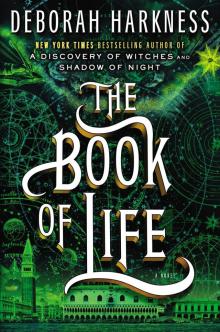 The Book of Life
The Book of Life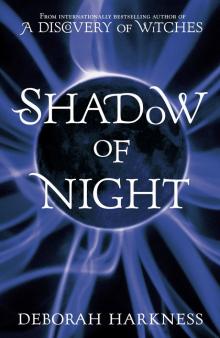 Shadow of Night
Shadow of Night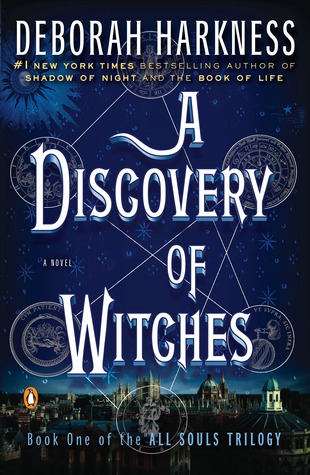 A Discovery of Witches
A Discovery of Witches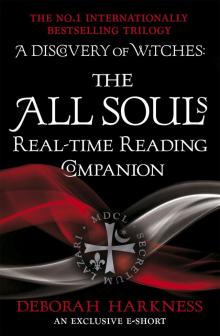 The All Souls Real-Time Reading Companion
The All Souls Real-Time Reading Companion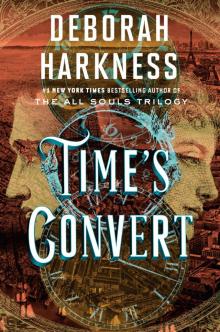 Time's Convert
Time's Convert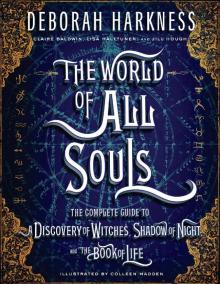 The World of All Souls
The World of All Souls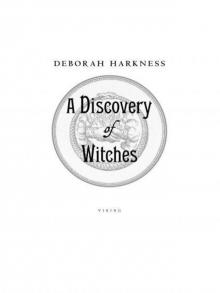 A Discovery of Witches: A Novel (All Souls Trilogy)
A Discovery of Witches: A Novel (All Souls Trilogy) Shadow of Night: A Novel
Shadow of Night: A Novel